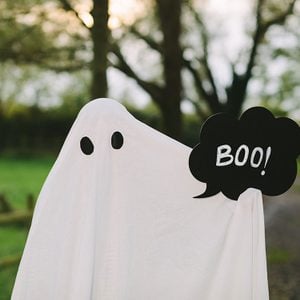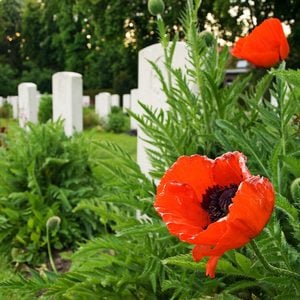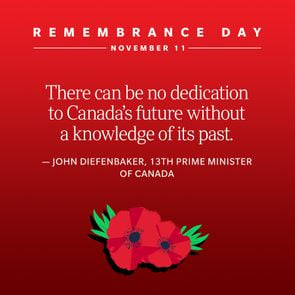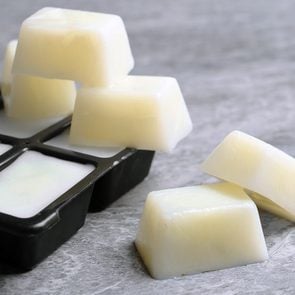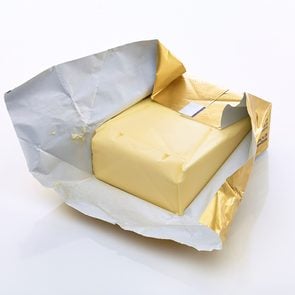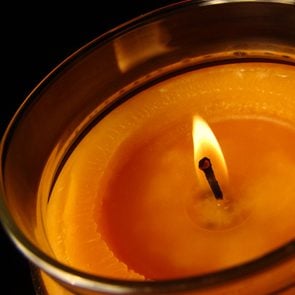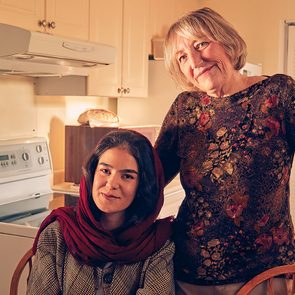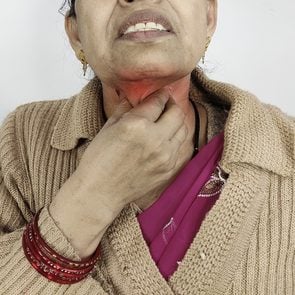
Whether you’re a sports fan or just eager to spin some reels, you’ll find an incredible range of options at the best online gambling sites available in Canada.
Jackpot City sets the bar high with its CA $1,600 welcome package, a robust list of games from some of the industry’s most trusted providers, and over 20 years of experience.
But other online gambling sites available in Canada want to take a shot at the top spot, and we at Leanback Player are here for it.
Best Online Gambling Sites Available in Canada
- Jackpot City: Best Canadian gambling site overall
- PlayOJO: Over 3,000 casino games
- Spin Casino: CA$1,000 sign-up bonus
- Bodog: Fastest crypto payouts
- BetOnline: Excellent sportsbook
No matter where you decide to play, it’s important to focus on having fun and to always wager responsibly.
Are you suffering from a gambling problem, or do you know someone that does? If so, it’s crucial to call the Gamblers Anonymous at 1-626-960-3500 to seek help from one of the numerous advisors on the ground. Speaking to these professionals is instrumental in making gambling a safe venture for you and your loved one. You also have to be aware that gambling sites and other related products are for those aged 18 and above. Non-Ontario only.
Several casino sites listed in our reviews might not be available in your region. To this end, you might want to go through your jurisdiction’s local laws and rules to have an idea of online gambling’s legality.
If you’d like some top-notch information that focuses on gambling and everything in-between, check out these organizations:
Heads up about our links! Adblock might get confused so please disable it if you have any issues.
1. Jackpot City – Best Canadian Online Gambling Site Overall
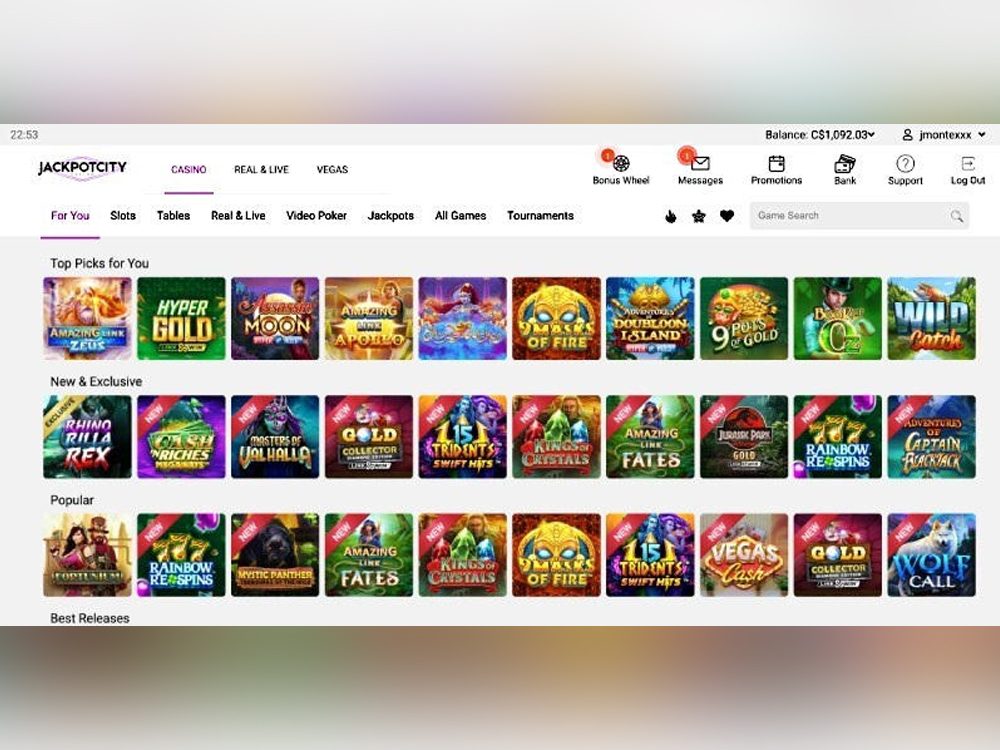
Pros
- Up to CA $1,600 in bonus cash
- 500 slots and table games
- Tons of progressive jackpot prizes
- Over 50 live casino games
- 25 years in the industry
- 24/7 customer service
Cons
- Could add more promotions
- No sports betting section
If you’ve been around the online casino space for a while, you’ve probably heard of Jackpot City. With over two decades of experience, secure end-to-end encryption, and a library powered by some of the most trusted names in the industry, it’s the top choice for Canadians.
Gambling Options: 4.85/5
Jackpot City offers over 500 games from top names like Microgaming, NetEnt, and Novomatic. You’ll be able to enjoy popular slot games like Ancient Fortunes: Zeus, Thunderstruck Storm Chaser, Fire and Roses Joker, and even jackpot giants like Mega Moolah.
And if slots aren’t your thing, you’ll still have access to plenty of live and casino table games with blackjack, baccarat, roulette, and poker options. The site even serves up a variety of keno and online bingo games. No matter what you like, you’re pretty well covered.
Bonuses and Promotions: 4.8/5
The Jackpot City welcome bonus is split across your first four deposits, which makes it easy to collect the entire CA $1,600 without turning your pockets inside out at the beginning. You will get a 100% match for up to CA $400 on each deposit.
Some bonuses are available after the welcome package, and Jackpot City periodically contacts you with great offers and promotions, so keep an eye on your email to ensure you don’t miss anything.
Deposits and Withdrawals: 4.7/5
Banking at Jackpot City is safe, fast, and reliable thanks to trustworthy payment channels like Visa, Mastercard, ecoPayz, Skrill, Neosurf, Neteller, MuchBetter, and Paysafecard.
Minimum deposits are super low, starting at only CA $5. Payouts are fast and easy, usually completed in 24 hours or less.
>> Get up to CA $1,600 welcome bonus [Jackpot City]
2. PlayOJO – Best Casino Game Variety of all Gambling Sites Available in Canada
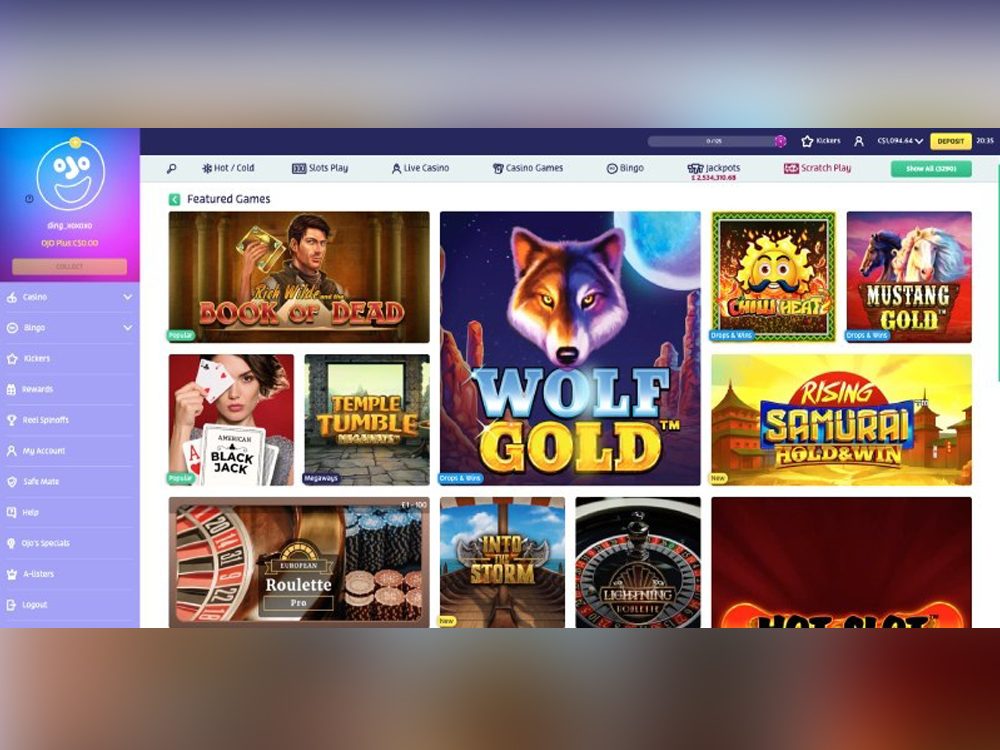
Pros
- 50 bonus spins on Thor: The Trials of Asgard
- 0x wagering requirement on bonuses
- Cashback on every game
- Over 3,000 slots and table games
- Live dealer games, instant win scratchers, and more
Cons
- Website elements sometimes fail to load properly
- No sports or horse betting
PlayOJO only made its way to Canada’s shores recently, but it has already established itself as one of the true powerhouses of online gambling with a massive game library.
Gambling Options: 4.9/5
There are over 3,000 exciting games available at PlayOJO consisting of everything from popular slots like the Age of the Gods series to eight different Big Bass games, including Big Bass Bonanza, Big Bass Amazon XTreme and Big Bass Bonanza Megaways for players looking for a more pay line heavy experience.
We also found over ten bingo games, keno, Plinko, and dozens of instant-win scratch cards with various themes.
The table game selection is also impressive. You can play American, European, and French roulette and exciting variants like MultiFire and the live croupier Who Wants to Be a Millionaire roulette game.
Everything we tested worked beautifully on mobile and desktop devices.
Bonuses and Promotions: 4.5/5
PlayOJO is one of the very few online casinos available in Canada that doesn’t attach a rollover requirement to any of its bonuses. Everything you win from your free spins — or the rare cash bonus — is yours to keep. You can withdraw it right away, too.
This is showcased beautifully with the welcome bonus that gives players who deposit CA $10 or more 50 free spins on the exciting slot game Thor: Trials of Asgard. These spins have no wagering requirements, so you can do whatever you want with the winnings.
PlayOJO also offers players cash back on every game played through the OJOplus program. This program awards players with OJOplus points (the amount varies depending on the game played), which can later be redeemed to your account as cash.
Deposits and Withdrawals: 4.8/5
Players can load their accounts with various credit cards, prepaid cards, and e-wallets, depending on where they’re playing from. Most Canadian players will be able to use Visa, Mastercard, Paysafecard, AstroPay, Interac, Jeton, MuchBetter, Payz, and more.
There are no minimum withdrawal limits because PlayOJO believes that your money is, in fact, your money. However, you might not be able to withdraw if the amount isn’t enough to cover any fees, as some payment methods do have transaction fees attached.
>> Get 50 free spins on Thor: Trials of Asgard [PlayOJO]
3. Spin Casino – Best Bonuses of All Gambling Websites in Canada
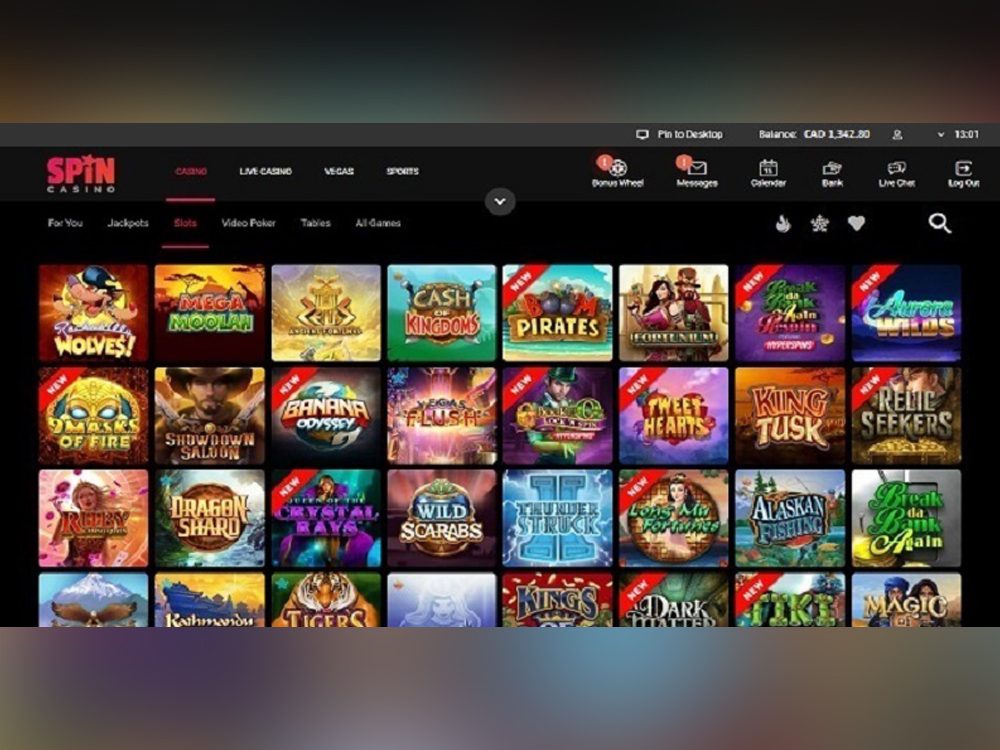
Pros
- Up to CA $1,000 in bonus cash
- Over 550 casino games
- Excellent progressive jackpot slot variety
- Phenomenal mobile app
Cons
- No sports betting section
- Need to signup before browsing the library
Coming up at #3 is Spin Casino. This sister site to our #1 casino packs a lot of the same great features as Jackpot City but manages to deliver a fantastic mobile gambling experience.
Gambling Options: 4.7/5
Spin Casino’s library of games is powered by the likes of Microgaming, NetEnt, Red Tiger, Evolution Gaming, and over 25 other prestigious providers. This gives you access to an impressive collection of slots, including 9 Skulls of Gold, Amazing Link Zeus, Cleopatra’s Golden Spells, and must-win jackpot games like Break Da Bank Again or Alchemy Fortunes.
Table game fans will be able to enjoy live dealer and regular casino game versions of classic blackjack, roulette, baccarat, and poker, with plenty of variants to keep things fresh and exciting.
The best real money online casinos on this list offer a mobile-compatible website instead of a downloadable mobile app — but Spin Casino does both. So, you can enjoy this casino’s slots, table games, and live dealer games anywhere from the comfort of your device’s browser.
Bonuses and Promotions: 4.6/5
Your first deposit as a new player will see a 100% deposit match bonus good for up to CA$400 in bonus cash. Your second and third deposits will also get a 100% match bonus, each worth up to CA $300. That’s a total of CA $1,000 in welcome bonuses.
All bonuses come with the same wagering requirement applied to the bonus itself and not the deposit.
Deposits and Withdrawals: 4.5/5
Canadian mobile players can use Visa and Mastercard options, Interac, Apple Pay, Paysafecard, MuchBetter, Insta Debit, Neosurf, and e-check. Deposits and withdrawals are quick and easy, with most payouts processing within 1-3 days.
>> Score your CA $1,000 sign-up bonus [Spin Casino]
4. Bodog – Best Gambling Site Available in Canada for Crypto
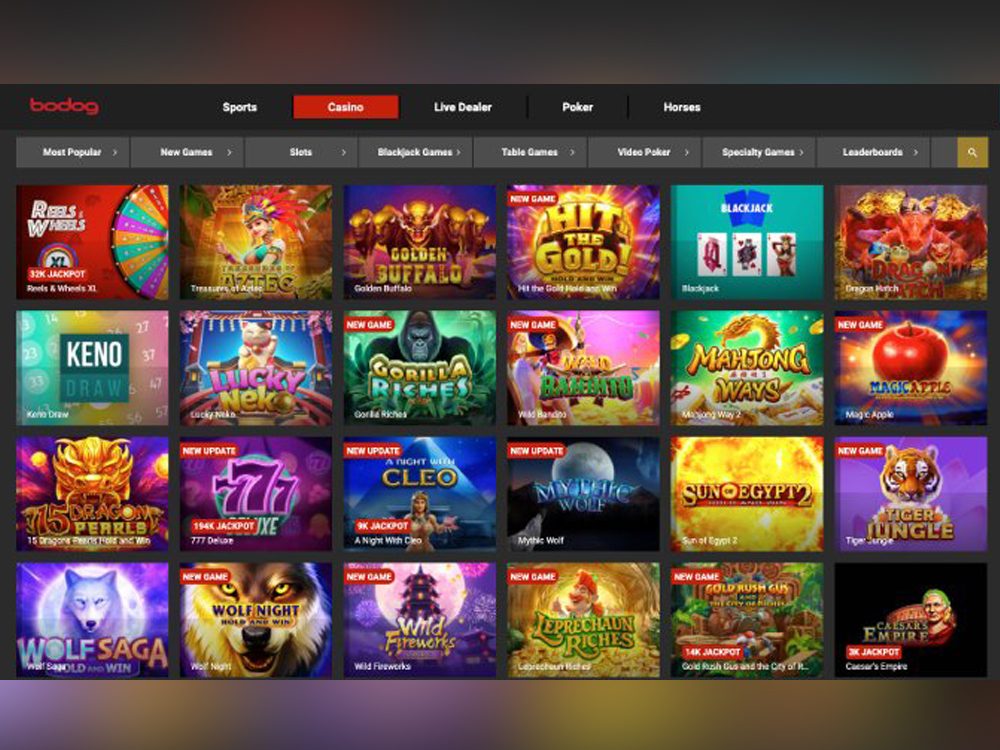
Pros
- Up to CA $600 + 50 free spins
- 700+ casino games
- Online poker games and tournaments
- Feature-rich sports betting app
Cons
- Dual lines to discourage sharp bettors
- No enhanced or boosted odds
If you’re a hardcore sports fan looking for something a little different than what’s offered at BetOnline, Bodog is the next best thing.
Gambling Options: 4.7/5
Bodog is another fantastic gambling site that has positioned itself as a one-stop betting shop. You’ll find a massive online casino with over 700 top-notch casino games from providers like Rival, Genesis, Betsoft, and over 25 more trusted names.
This lets you experience everything from the best online slots available in Canada, like Elvis Frog in Vegas, to Keno, Plinko, rocket dice, and crash gambling games like SpaceXY.
There is also a robust poker app on board that is very nearly as perfect as BetOnline’s own. You’ll have tons of great features built-in, making your casual poker games or cutthroat tournament experiences feel secure, comfortable, and fun.
All of that is just setting you up for Bodog’s real offering. This sportsbook features competitive odds on over twenty sports, including football, basketball, soccer, UFC, rugby… you name it, you can find odds on it.
Bonuses and Promotions: 4.7/5
Bodog offers a variety of welcome casino bonuses for new players, depending on what they’re looking for.
For example, you can claim the 100% match casino bonus, which will net you up to CA $600 in bonus cash plus 50 free spins on the fantastic Gods of Luxor slot game.
Then there’s the 100% match-up to CA $1,000 poker bonus that unlocks over time by staking real money at the tables, letting you earn CA $5 in bonus cash for every 150 Bodog Reward Points you earn.
Finally, there’s the 100% sports welcome bonus. This bonus comes with up to CA$ 400 in bonus cash and 50 free spins on Gods of Luxor. While the free spins have a 25x wagering requirement attached, the bonus cash comes with a startlingly low 5x playthrough requirement before you can withdraw any winnings, making it an excellent choice for most bettors.
Deposits and Withdrawals: 4.8/5
Players can load up their accounts using most major credit cards, Interac, Bitcoin, Bitcoin Cash, Ethereum, Litecoin, and Tether.
Payout times are fairly fast, and while some payment methods have significant fees attached, you can avoid most of them by using one of the crypto payment methods offered.
>> Enjoy up to CA $600 and bonus spins [Bodog]
5. BetOnline – Best Online Gambling Site Available in Canada for Sports Betting
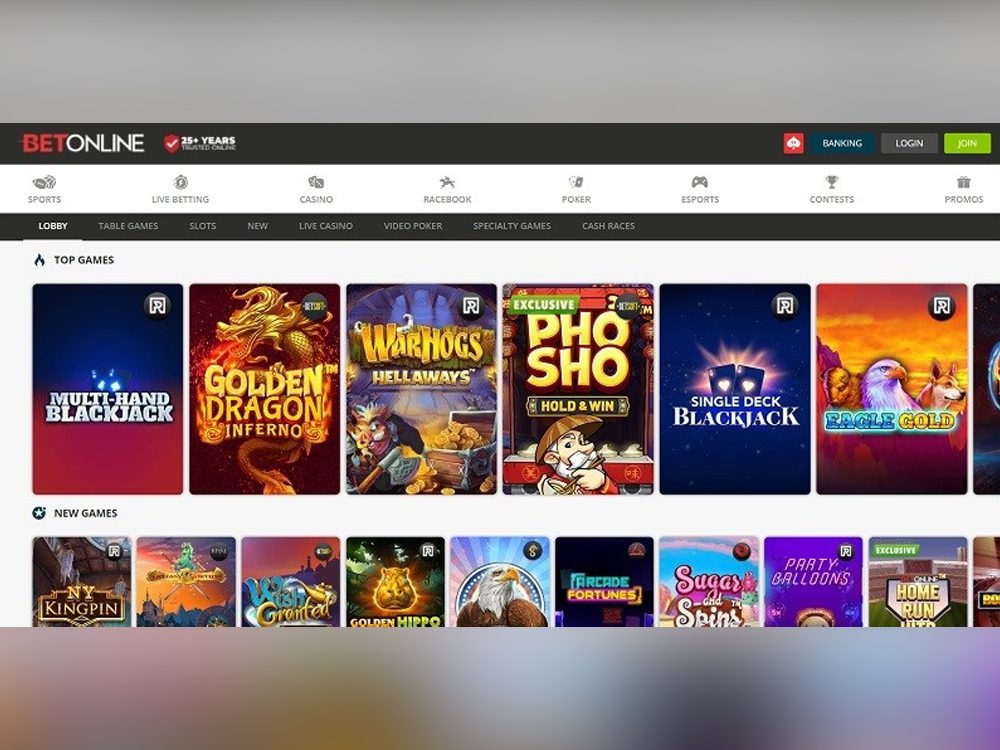
Pros
- Three-tier welcome bonus up to CA $3,000
- Over 500 casino games
- Well-established sportsbook
- Exciting poker tournaments
- Supports over a dozen cryptos
Cons
- 9.75% credit card transaction fee
- Could add more jackpot slots
BetOnline lets you play casino games and bet on over 25 sports categories. It’s one of the few extremely versatile online casino sites for Canadian players.
Gambling Options: 4.85/5
BetOnline has a range of great slots from top providers like BetSoft, Dragon Gaming, Nucleus Gaming, and more. This gives players unfettered access to popular games like Golden Dragon Inferno, Kung Food Panda, Faerie Spells, and many more.
You’ll also be able to enjoy blackjack, roulette, casino poker games, baccarat, craps, and plenty of great video poker options.
Speaking of poker, BetOnline also has a phenomenal poker app that lets you enjoy competitive poker games and even take part in massive online poker tournaments with huge prizes, including the CA $3 million Championship Online Poker Series.
At this point, you might be thinking to yourself, “Wow, what a great gambling site,” but we’re still getting warmed up.
BetOnline also has sportsbook and racebook sections, with fantastic odds-on events from around the world. Sports fans can find odds on everything from American football to golf and even darts. There are also plenty of options to customize your wagers thanks to BetOnline’s easy Same Game Parlay features and live, in-play betting.
Bonuses and Promotions: 4.6/5
Players looking for some action at BetOnline’s casino games can use the BETCASINO promo code to get a 100% match up to CA $1,000 on each of their first three deposits.
The next bonus is for poker fans with the POKER1000 promo code. You must deposit CA $50 or more to activate a 100% deposit match bonus of up to CA $1,000.
There’s also a dedicated sportsbook welcome bonus, which gives you a 50% match bonus for up to 1,000 when you make a fiat deposit using the BET1000 promo code. However, if you would rather use crypto, you can redeem a 100% deposit match sportsbook bonus good for up to CA $1,000 using the code CRYPTO100.
Deposits and Withdrawals: 4.7/5
BetOnline accepts a wide range of payment options, including most major credit cards, money orders, wire transfers, and cryptos like Bitcoin, Bitcoin Cash, Binance, Avalanche, Cardano, Dogecoin, Ethereum, Litecoin, Polygon, Ripple, Shiba Inu, Solana, Stellar, Tether, Tron, and USDCoin.
We definitely recommend using crypto at this casino if possible, as it avoids the rather steep credit card processing fee and gives you access to the best welcome bonus available.
>> Get up to CA $1,000 welcome bonus [BetOnline].
How We Picked the Top Online Gambling Sites Available in Canada
So, what really goes into making a great gambling site? Well… a lot of things, really. And we at Leanback Player inspect everything from game variety and bonuses to the fine print at the bottom of the T&Cs. Unfortunately, we’re limited in how much we can write about, so we’ll be focusing on the following criteria:
Gambling Options
We look into all the different ways to play. Whether it’s slots, live table games, online poker, or sports betting, we’ll dive in deep and score each casino based on quality over variety — though we do take the number of ways to play into account.
Bonuses and Promotions
Each promotion has unique terms and conditions. Whether you want a massive match bonus offering a ton of bonus cash but with steep wagering requirements, or you’re looking for something a little more modest, you’ll find the best ones listed in our guide.
Deposits and Withdrawals
Whether you’re looking to play with all the crypto you’ve been hoarding, or you are a fan of more conventional payment methods, there is something for everyone in this list here and we’ve scored each casino not just on how many methods they offer, but their fees and limitations as well.
Reputation
We’re choosing reputable online gambling sites that are licensed by regulatory bodies like the Malta Gaming Authority and Kahnawake Gaming Commission. We also check other reviews from players like us to make sure every single aspect of the site is tested and researched.
Why is Jackpot City the Best Canadian Online Gambling Site?
We’ve clearly laid out five fantastic casinos offering online gambling for Canadians, but you might be wondering why Jackpot City scored the highest.
We’ll break it down simply for you.
First, this is not some Johnny-come-lately situation. Jackpot City has been around since 1998, which means this casino knows what it’s doing.
Over the last 25 years, it has managed to establish itself as one of the premier online casinos by using only the best software providers (you’ll find names like Microgaming and NetEnt inside) to provide you with a great selection of slots, table games, and progressive jackpot prizes.
The generous welcome bonus is also worth noting, as it breaks up the CA $1,600 in bonus cash over your first four deposits, so you don’t have to try and throw out too much cash at any one time.
Finally, the Jackpot City customer support team is one of the friendliest we’ve dealt with, making you feel cozy and welcome.
Online Gambling Sites Available in Canada vs Land-Based Casinos
Have you been toying with the idea of switching to online gambling, but need that final push? Here are a few of our favourite things about online gambling to help entice you.
Convenience: Whether you’re betting on your favourite online football team or taking a spin at the slots — the fact that you can enjoy all of the action from the comfort of your own home cannot be downplayed.
No need to find a sitter for the kids, gas up the car, or even wear pants if you don’t want to. You’ll have access to all the great odds and games without leaving your bastion of cozy.
Variety: The best gambling sites available in Canada offer not only thousands of exciting casino games but, in some cases, even sports betting markets worldwide, giving you great odds on upcoming events for every sport from basketball to darts.
Bonuses: Online casinos offer something that you just can’t find at a traditional casino — free play. From deposit match bonuses to free games thanks to bonus spins, there are a ton of different ways online casinos can give you more chances to play and win.
How Do I Choose the Best Gambling Sites Available in Canada?
Choosing your perfect online gambling site can seem like a daunting task — there are just so many of them out there, and each of them so different from the other. To help you find their perfect casino site, we’ve put together this list of questions you can ask yourself to help narrow down your search.
What kind of gambling do you want to do?
If you’re a diehard sports fan and you get your jollies from betting on the Big Game, a gambling site like Bodog would be a great fit. Or if you’re into slots, Jackpot City would be an excellent choice. It’s important that whatever casino you join has either the specific game you like or something similar.
What does the ideal deposit bonus look like for you?
Do you need massive amounts of bonus funds to feel satisfied, even if it has stringent wagering requirements attached to it? Or would you be happier with a bunch of free spins with low (or no) rollover attached so you can claim your winnings easily?
What is your preferred payment method?
Are you a blockchain bettor who loves to wager with Bitcoin and other forms of cryptocurrency? Maybe you prefer classic methods like electronic checks or credit cards. Regardless, make sure the casino supports your preferred payment channels with as little fee as possible and a reasonable threshold for transactions.
What are other players saying?
Do a quick internet search to see what other Canadian gamblers have said about the gambling site you’re interested in. This will give you a clearer idea of how the casino treats its players and could help you figure out if there’s any weird fine print you didn’t notice yourself.
Can I Play for Real Money at Online Gambling Sites Available in Canada?
Absolutely. Canadians looking to play online casino games for real money are in luck as there are more real-money online casinos opening every day. Our team has put in hours of research to ensure that they put together a list of the top five real-money online gambling sites available in Canada so that way you know where to play.
Here are the best real-money gambling sites available in Canada:
Guide to the Best Online Gambling Sites Available in Canada – FAQ
What Is the Best Online Gambling Site for Canadian Players?
It’s a tough choice but Jackpot City deserves the top spot in our list of the best online gambling sites thanks to its generous welcome package, premium slots and table games, and excellent customer service.
Is It Legal for Canadians to Play at Online Gambling Sites?
Online gambling is permitted at offshore online casinos in many of Canada’s provinces. Still, restrictions vary from location to location, so we recommend players look into local laws before engaging in any online casinos, sportsbooks, lotteries, or other forms of online betting.
Which Gambling Site Available in Canada Has the Best Deposit Bonus?
BetOnline is the gambling site available in Canada with the best deposit bonuses, with its CA $3,000 casino welcome offer and a 50% match sports betting bonus.
Do Any Gambling Sites Available in Canada Offer Instant Withdrawals?
Many of the best online gambling sites available in Canada offer instant withdrawals — particularly those that accept cryptocurrency payments. Bodog, for example, offers instant (or as close to instant as one can hope for) withdrawals when players use Bitcoin, Bitcoin Cash, Ethereum, Litecoin, or Tether.
Do Any Gambling Sites Available in Canada Offer No-Verification Withdrawals?
Yes, some of the best gambling sites Canada players sign up to offer no-verification withdrawals, though they are not terribly common. BetOnline and Bodog are hit or miss as they sometimes require proof of identification before payouts are collected.
Are Online Gambling Sites Legit?
Yes, the best Canadian online gambling sites are legit and safe to play at. Every casino on our list uses games and betting software from trusted providers, and they also offer secure end-to-end encryption, keeping your information safe.
Every one of these sites is also regularly checked by a third-party organization to ensure there is no funny business going on behind the scenes.
Which Online Gambling Site Available in Canada Has the Best Payouts?
While all of the Canadian online casinos on our list have a high payout percentage, PlayOJO’s high payout games dominate the market. It has one of the highest payout rates in the online gambling industry, with an RTP of somewhere around 97% overall.
Which Games Pay Out the Most at Gambling Sites Available in Canada?
Blackjack, Craps, Baccarat, Roulette (especially French or European), and Video Poker are all games that have rather low house edge and high payout potential. But for Canadian players looking to play specific high RTP slot games should play the following:
- Big Bass Bonanza (96.71%)
- Blazing Bison Gold Blitz (96%)
- Starburst (96.09%)
- 88 Fortunes Megaways (96.06%)
- Fat Santa (96.45%)
Signing Up at the Top Gambling Websites Available in Canada
If you’re ready to sit down and enjoy some of the best slots and table games available in Canada, you can’t beat Jackpot City. That’s why we’ve put together this easy-to-follow guide to creating your account — this way you can see how easy it is to break away from the humdrum and live a little.
Step 1: Choose a Gambling Site to Use
- Take a look at our top picks
- Choose your favourite site
- We recommend using Jackpot City
- Head to the Jackpot City Canada page
- Click Sign Up to get started
Step 2: Create Your Account
- Select your location before choosing a username and password
- Provide your contact information, name, date of birth, etc.
- Agree to the T&Cs
Step 3: Make the Deposit & Activate Your Bonus
- Log in to your account
- Head over to the cashier
- Claim your first 100% match bonus up to CA$400
Step 4: Start Gambling Online
- Go to the casino games section
- Look for your favourite titles
- Now, you can start playing the best online casino games!
Comparison of the Best Online Gambling Sites Available in Canada
Jackpot City: Our #1 pick offers hundreds of quality slots and table games, a generous welcome bonus, and some of the best customer support in the industry. Sign up today to get up to CA $1,600 in bonus funds.
PlayOJO: With over 3,000 exciting casino games, rollover free bonuses, and cashback on every game played make this casino a runner-up on our list. New players can get 50 free spins with no wagering requirements when they deposit CA $10 or more.
Spin Casino: Want the most generous bonuses? That’s where the Spin Casino comes in. Get up to CA $1,000 in bonus funds today.
Bodog: Another phenomenal all-in-one gambling site, Bodog offers competitive odds across over 20 betting markets, a great online poker app, and tons of quality slots and table games. Claim one of three excellent welcome packages when you sign up for an account.
BetOnline: This site has won us over with its impressive collection of games, a wide range of generous promotions, and one of the best collections of crypto banking options. Join now and get up to CA $1,000 in bonus cash for the casino, sportsbook, or poker.
Tips for Successful Online Gambling – Canada Edition
Do you love gambling but hate when your luck runs sour? We at Leanback Player feel the same way. Luckily for you, we’ve put together a few betting tips so that way regardless of whether you’re a fan of sports betting or casino games, you’ll be able to bend luck in your favour.
Pick High-RTP Casino Games: If you’re into slots, stick to high-payout slot games with return-to-player rates of 96% and above. Otherwise, games like roulette, blackjack, baccarat, and craps are better choices, as they have specific strategies you can learn to bring the house edge down to 1-2%, giving you almost 50/50 odds with each game.
Shop for the Best Odds: If sports betting is more up your alley, sign up for multiple online sportsbooks so you can find the best odds on every event. Each bookmaker sets their own odds based on their own analysis; some bookmakers might release odds that miss something that will give you favourable odds.
Avoid Parlay and Proposition Bets: Both Parlay and Prop Bets seem like a good deal, as the increased risk means greater rewards when they pay off — but that increased risk also makes them a bad investment for all but the most experienced sports bettors.
Manage Your Bankroll: Before sitting down to play your favourite progressive jackpot slots or start filling your bet slip, it is important to outline a budget of how much you’re willing to spend/lose before stepping away for a while. This will help you keep a level head and avoid chasing losses. An emotional bettor is generally a broke bettor.
Join the Best Gambling Sites Available in Canada Today!
Now that you’ve seen the best online casinos and gambling sites available in Canada, it’s time for you to get out there and enjoy.
While we think Jackpot City is the overall best — especially for players looking for an exciting online slots experience — we understand that it might not be the right fit for you. That’s why we included a few other options that might tickle your fancy.
No matter where you decide to play, it’s important to focus on having fun and to always wager responsibly.
We tend to take holiday colours for granted, not giving them too much thought since they’re so ingrained in our culture. It’s usually pretty obvious what colours go with which holidays—all you need to do is step into a store to see full aisles inundated with the hues of the season. But what might be less obvious is why certain colours are associated with certain holidays. Of course, sometimes the colours are self-explanatory: the association of red with Canada Day, for instance, or green with St. Patrick’s Day. But other times, the colours can seem random.
Why Halloween colours are black and orange
For instance, as black and orange begin to take over department store aisles and pop up outside homes as decorations, we wonder how these Halloween colours actually became Halloween colours. Is it just because of black cats and pumpkins, or is there a deeper meaning to it?
Black
In the early days of Halloween-like celebrations, black was actually supposed to be more sad than spooky. To learn how these colours became associated with Halloween, we’ll have to explore the history of the holiday itself. Halloween can trace its origins back to a pagan celebration called Samhain, a ritual that the ancient Celts celebrated in late October and early November. This is because it was approximately halfway between the fall equinox and winter solstice. The purpose of the celebration was to welcome in the time of harvest, and with it, “the dark half of the year,” according to History.com. So, there’s some darkness already.
But the true symbolic significance of black had to do with death, as did the holiday. The ancient Celts believed that during Samhain, the boundaries between the living and the dead were weakened. So the celebration would also include tributes and offerings to deceased ancestors, and celebrants wore deep black mourning dress.
Orange
Orange’s role as a Halloween colour is a little more self-explanatory, but it also has to do with the particular time of year. Again, Samhain was ushering in the harvest time; people would have seen the trees turn orange after months of greenery. But the orange also has to do with another important component of the ancient Samhain celebrations: fire. The ancient Celts would light community fires while leaving the fires in their own hearths to burn out. The fires could also be rituals to help ward off evil spirits while the gateway between the living and the dead was weak. And those fires certainly would have been orange!
Now that you know why Halloween colours are black and orange, find out where the new trend for pink pumpkins is coming from.
My father, R. Blaine Shupe, was one of thousands of Commonwealth pilots to graduate from the British Commonwealth Air Training Plan in Canada during the Second World War. Canada’s wide-open spaces away from enemy interference made our country ideal for air training, and pilots from Great Britain, New Zealand, Australia and Canada earned their wings at these facilities.

A program from Blaine’s fancy graduation dinner is one of just a few precious keepsakes we have from this time. Another heirloom is a photograph of Blaine and two others standing around a North American Harvard II training aircraft, a primitive predecessor of the CT-156 Harvard II trainer the Royal Canadian Air Force uses today. The confidence of the handsome young men, augmented by aviator sunglasses, reminds me of Tom Cruise and his pilot buddies posing beside their F-14 Tomcats in Top Gun.

Flying is not to be taken lightly, however. Training accidents in recent years, including the crash of a CT-114 Tutor in May of 2020 in Kamloops, B.C., which claimed the life of Capt. Jennifer Casey, remind me of a history lesson my father gave me in the early ’70s, when I was a young lad growing up in Weyburn, Saskatchewan. This three-hour excursion with Dad sparked a lifelong interest in aviation history, but, more importantly, made me appreciate the tremendous human cost of war. I would remain forever grateful for his military service and guidance growing up.

Blaine received his wings in October 1944 at #13 Service Flying Training School in North Battleford, Saskatchewan, one of more than 100 such schools in Canada during the war. There was even one located right in our hometown of Weyburn—#41. Blaine took me on a fascinating tour of the Weyburn base, located at present-day Weyburn Airport, and its relief landing field near the small town of Halbrite.
Touring the Old Flight Training Sites With My Father
The tour began almost as soon as we got into the car, when Blaine pointed out a strange-looking apartment block, explaining that it was once an enlisted men’s barracks. Soon after, I would proudly bring this fact to the attention of a friend who lived there.
Unlike most of the other bases on the Prairies, many of Weyburn’s structures were kept standing after the war, converted into various medical, educational, manufacturing and storage facilities over the years. Some of them, such as a couple of hangars, have hardly changed in appearance at all. Two of the best-preserved buildings are the headquarters building, which has been transformed into a sprawling residence, and the former supply depot that now serves as a functional home with character, and large art studio. The structure I remember best from my visit with Blaine is the two-storey 25-yard range, which looks like a concrete pillbox and is still very much intact. Graduating classes from Western Christian College customarily decorated the drab exterior of “The Rock,” as they called it, with colourful murals.

From the Weyburn base, we drove to the relief landing field near Halbrite, where we could examine the few remaining artifacts at our leisure. Just off the main road is a rectangular, earth-covered concrete bunker that Blaine said was probably used to house munitions and flammables. While he looked on, I scrambled up one of its steep sides and was just waiting for a soldier to emerge from one of the submarine-like hatches to see who was moving around on top of his flat roof. Even more interesting is a smaller but very solid fortification about 200 yards northwest. It only juts a couple of feet above the ground, close to where the runway used to be, but is easily visible from several hundred yards away. Blaine wasn’t sure what this stone and concrete bunker was used for. He thought it might have been the floor of a control tower at one time. It has four large, heavy-steel hatches on top that have since been opened and deliberately flooded to the top rung for safety reasons. The only other structure to see on the site was an enormous wooden hangar. Blaine spent quite a while looking around its huge interior and pointed out a few items left behind after the war. I think he was surprised at how well-preserved everything was inside. It reminded him of the hangars he used during his own training. Blaine said the training facilities were very similar to those in North Battleford. Today, its structures are an almost ghostly feature of the Prairie landscape.
The Veteran’s Section
I found our last stop a bit unsettling. We came to a halt near the Veteran’s section in the northwest corner of Hillcrest Cemetery, just south of town. Buried together in two short rows, surrounded by dozens of Saskatchewan veterans of both World Wars and Korea, are 17 RAF airmen who perished in training accidents flying out of #41 SFTS between March 1942 and December 1943. These men are included alongside 155 air personnel from England and other Commonwealth countries killed while training in Saskatchewan in a magnificent book commemorating Saskatchewan’s war dead, Age Shall Not Weary Them. Looking at the gravestones, you are immediately struck by the young age of most of the men. Some share the same date of death, often experienced officers and young pupils who were in the same crash. Over 1,700 airmen never lived long enough to see their own graduation day. An average of 12 servicemen died every week during the war in training accidents.
Blaine explained the air force suffered an exceptionally high mortality rate because of the perilous nature of its training. Certain airborne manoeuvres could be very challenging for inexperienced pilots. Many accidents, however, were strictly mechanical or weather-related. That was the saddest part of all, in Blaine’s opinion. Over one-quarter of all Allied air force casualties during the war were non-combat related. Seventeen fatalities and even more crashes in the span of just 21 months in a small rural community like Weyburn would have been acutely felt.

One grave that resonates with our family is that of Pilot Officer Harry Whittaker of Somerset, England, who died in October 1942 at 21 in the same crash as his instructor, Flight Lieutenant Harwood Williams of Leeds. My uncle, Jack Shupe, remembered Harry from his days playing ice hockey and described his sudden death as a shock, even in the aftermath of the Dieppe Raid that had shaken the entire province a few weeks earlier, with many casualties from Saskatchewan. Incidentally, my grandfather Joe Warren was the mayor of Weyburn during the war years and said that being a part of the delegations to visit some of the fallen soldiers’ parents and wives after the Dieppe Raid was one of the most difficult duties he had to perform.
The last British airman stationed in Weyburn to die in a training accident was 20-year-old Pilot Officer William Hughes of Hornchurch, Essex, on December 20, 1943.
Buried right next to him 59 years later is distinguished Weyburn native and Royal Military College graduate, Juli-Ann Dawn MacKenzie. Capt. MacKenzie and one other RCAF airman were killed when their CH-146 Griffon helicopter crashed near Goose Bay, Newfoundland, in July of 2002. This is yet another tragic but poignant reminder of the tremendous risk and sacrifice air force services endure to this day.
Don’t miss these Remembrance Day stories honouring Canadian veterans.

During the summer of 2017, I paid a visit to our nation’s capital of Ottawa and saw both the National War Memorial and the Tomb of the Unknown Soldier. This brought to mind a small, worn-out, pocket-sized New Testament that my mother gave to me many years ago. She told me it was a prized possession of her father, my grandpa, Thomas Watson, as it belonged to his brother who went missing in World War One and was never heard from again. At the time, and to my discredit, I possessed no interest in a man who paid the ultimate price for our freedom, despite having served in the Canadian Armed Forces Reserves myself. I had other interests and did not try to find out more about this relative. From time to time, I would look at the New Testament and wonder who this long-lost relative was and what he went through but took it no further. Looking at the Tomb of the Unknown Soldier, I finally decided that if I was going to talk the talk about remembering our living veterans, and honouring those who fell defending our country, I had better find out more about this man who paid the ultimate price.
My Remembrance Day project kicked off in September 2017, but I had very little to go on at first. I didn’t know where my long-lost relative served in World War One, which army unit he served with, when he fell in battle or even his name.
I decided to gather as much information from the resources that I had. Those included Google searches, Wikipedia, Canadian Veterans Affairs, a collection of memorabilia owned by my cousin, Dr. Richard Haugen, and picking the brain of my oldest living relative, my 89-year-old aunt, Francis (Betty) Haugen. Thankfully, I can now paint a pretty clear picture of the short life and service my long-lost relative—Private George William Watson—lived.
George was one of six children of my great-grandfather, Thomas Oats Watson, and was born on January 18, 1883. He was raised in a deeply devout family of Methodists in Arden, Manitoba, and remained very religious to the end of his life. In the letters he wrote to his youngest brother, my grandfather Thomas Watson, it is clear he was interested in horses, farming, local politics and even automobiles. My aunt Betty informed me that George most likely could have avoided military service, and lived to a very old age, but chose to come to his country’s aid in its hour of need.

Military Service History
From the Canadian Virtual War Memorial, I found George’s Attestation Paper, which was filled out when he enlisted on June 10, 1916, in the 200th Battalion CEF (Canadian Expeditionary Force) of the Canadian Army. His battalion was formed and based in Winnipeg and began recruiting during the winter of 1915-16. George Watson would remain in the 200th Battalion CEF during his military service and training while still in Canada.
I now turned to a series of letters that Private Watson wrote to his youngest brother, Thomas Watson, in an attempt to discover more clues, and piece together George’s training and postings in the Canadian Army.
In an undated fragment of a letter, George mentioned that he received a letter from his mother, which she had sent to Camp Aldershot with some Sunday school papers, while he was aboard ship in the Halifax harbour. George also makes mention of how military drills were conducted differently than Camp Hughes. It can therefore be safely assumed that Private George Watson was assigned to Camp Hughes and Camp Aldershot before shipping out from Halifax.
I quickly turned my attention online, to a website run by Parks Canada. I learned that Camp Hughes, named after Sir Sam Hughes, Canada’s Minister of Militia and Defence (1911-1916), was a major training area for the Canadian Army during World War One. In 1916, the year George Watson joined the army, Camp Hughes reached its maximum size—a total of 27,754 troops undergoing training. This made Camp Hughes, at the time, the most densely populated area in Manitoba, outside of Winnipeg. In order to train soldiers how to operate on a battlefield, Camp Hughes featured an extensive trench system, which is still there today for visitors to see. Despite the camp’s closure in 1934, it is still recognized as a place of national historic significance by the government of Canada.
As I continued my search on Wikipedia, I learned that Camp Aldershot, located near Kentville, Nova Scotia, was a training centre for the Canadian infantry during the First World War. More than 7,000 soldiers at any particular time were undergoing training there. While there were temporary buildings to house cooking faculties, mess halls and the camp hospital, the men undergoing training at that camp lived in tents. Odds were George went through basic and infantry training at Camp Hughes, Camp Aldershot, or both, before being shipped overseas. At 33 years old, George would have been older than most recruits, especially since most men who enlisted were in their late teens or early 20s. I personally went through basic training when I was 17 and it was a challenge, even at that young age. I cannot imagine trying to do it at 33!

A Sacrifice Like No Other
The 200th Battalion shipped out to Britain and, shortly thereafter, became part of the 11th Reserve Battalion on May 14, 1917. In January 1917, the personnel of the numerous Canadian battalions in England were placed into 26 new reserve battalions, and reinforced other infantry battalions in France and Belgium. Private George Watson wrote to his brother, Thomas, on May 28, 1917, telling him how he was at Shorncliffe Camp in southeast England and was still living in a tent. He also described the sports day that was organized at the camp to celebrate Victoria Day and how he got paid the princely sum of one pound, sixpence. Sometime before November 6, 1917, Private George Watson ended his time with the 11th Reserve Battalion in England and was transferred, as a replacement, to the 27th Battalion, an infantry battalion of the Canadian Expeditionary Force. It originally disembarked in France on September 18, 1915, where it fought as part of the 6th Infantry Brigade, 2nd Canadian Division, in France and Flanders until the end of the war. The battalion was disbanded on September 15, 1920.
Returning to The Canadian Virtual War Memorial, I discovered Private George William Watson’s military service number, and that he had been declared missing on November 6, 1917. I was lucky enough to find the war diary for the 27th Battalion, for the month of November 1917. It documented daily reports filed by an army unit in the field and contains orders, intelligence reports, unit strength, and casualty reports of friendly and enemy personnel. In this war diary, I found that the 27th Battalion took part in an assault on the town of Passchendaele in Flanders, Belgium, as part of the 3rd Battle of Ypres. Passchendaele was captured by Canadian army units on November 6, 1917, the same day that Private George William Watson and nine other soldiers from the 27th Battalion went missing. In addition, the 27th Battalion lost 45 other men, killed in action, and 187 more were wounded.
The brutality of war denied George a known and honoured resting place, but his name appears at the top of Page 346 in the World War One Book of Remembrance in the Memorial Chamber of the Parliament of Canada. To honour George’s sacrifice, this page is displayed by a grateful nation every July 27th for public viewing. In addition, George’s name appears in The Menin Gate Memorial, in the town of Ieper (formerly Ypres), West Flanders, Belgium, which is dedicated to the 55,000 men who were lost without a trace. If ever you’d like more information on George and his story, visit this YouTube link.
George, I hope, wherever you are, that you are resting in peace. Thank you for going to a terrible war and helping to secure the freedom I enjoy today!
Check out more Remembrance Day stories honouring Canadian veterans.

In Canada, the last months of the year are punctuated with festive gatherings—from Thanksgiving and Halloween to Diwali and Christmas. That means more parties, more food and more opportunities for clogged pipes. Some harmful substances can impact infrastructure and even drain into our lakes, rivers and streams, damaging the environment and local aquatic life. That’s why it’s important to watch what you pour down your sink or flush down your toilet.
But do you know how to properly dispose of everyday items like grease and wipes?
Follow this City of Toronto guide when you’re tidying up, cooking for a large group or prepping before party time to help prevent costly blockages and basement flooding, all while protecting local waterways.
1. Fat, oil and grease
No matter what you cook throughout the holidays—whether it’s a juicy turkey with rich gravy or a simple salad with dressing—you’ll be using cooking oils, butter, margarine, shortening or lard. But rinsing these fats down the drain is a big no-no. Even though they may appear liquid when hot, they’ll harden as they cool, which can cause build-up that leads to blockages in your home’s pipes and the City’s sewer system. Beware of fat found in meats, bacon drippings, salad dressing, gravy, milk, cream, soups and sandwich spreads.
What to do instead: Collect the grease and allow it to harden (or saturate a paper towel with the oils) and toss it in your green bin. If you have large amounts of cooking oil take it to a Drop-Off Depot or Community Environment Day. For commercial businesses, like a restaurant, it is mandatory to install a grease trap.
2. Food scraps
Avoid washing bits of food down the drain when you’re rinsing out casserole dishes or washing up your pots and pans.
What to do instead: Use a strainer in your sink to catch scraps and place them in your green bin.

3. Cleaning products
When guests arrive to socialize or enjoy a homecooked meal, you want your space to be spick and span. But tidying up can produce waste that or is harmful to people and animals. Any liquid, gel or powder cleaners, bleaches or disinfectants that have warning labels like “corrosive,” “flammable,” “explosive” or “poisonous” do not belong down the drain.
What to do instead: Bring household hazardous waste to a Drop-Off Depot, Community Environment Day or other appropriate disposal site. And if you witness a hazardous spill, either in the environment or down your own drain, call 311 immediately.
4. Facial tissues, paper towels and wipes
Certain paper products and wipes that say “flushable” or “biodegradable” should stay out of the toilet, as they can cause time-consuming clogs.
What to do instead: Put facial tissues and paper towels in your green bin. Wipes of any kind should go in the garbage.

5. Personal hygiene items
Even small, seemingly inconspicuous products like dental floss shouldn’t be flushed down the toilet.
What to do instead: All face and baby wipes should go in the garbage, as should cotton swabs, dental floss, condoms and plastic tampon applicators and wrappings. Tampons and sanitary pads can go in the green bin. Grooming products like nail polish, nail polish remover, alcohol-based perfumes and aftershaves as well as non-empty aerosol cans are considered household hazardous waste and should be disposed of as such.

6. Medications
What to do when you have a headache at the end of the night, but realize your painkillers have expired? Certainly don’t flush them down the toilet! No matter what form your medication comes in, whether that’s pills or liquids, it doesn’t belong in the sewer where it can harm the environment.
What to do instead: Return medications to your local pharmacy. They’ll dispose of them in a safe manner.
For more information and to see what to do with oils, fats and items like motor oil, paint, pesticides, medications and hygiene products, visit toronto.ca/notdownthedrain.
They say that everything’s better with butter, and it’s hard not to agree. Think about what a pat or two of butter can do for bland, starchy foods like rice, noodles and potatoes. You might not ordinarily think of eating an entire basket of bread, but serve it alongside a bowl of restaurant butter and it becomes downright irresistible. Such is the power of butter.
But do you need to visit your favourite restaurant to enjoy the best butter of your life? Nope! Professional chefs know a few butter hacks, and lucky for you, we’re about to reveal all those tricks. Here are the secrets behind restaurant butter, along with a few helpful food facts, so you can taste the magic anytime you please.
Sign up for our Daily Digest newsletter for more cooking tips, home hacks and humour, all week long.
Why does restaurant butter taste better?
Let’s get one thing straight: The notion of “better” is entirely subjective, so there are many different reasons someone might believe restaurant butter tastes better than what they’re eating at home. Not only that, but all restaurants serve different brands and styles of butter. A fast-service restaurant like a diner may serve prepackaged pats of ice-cold butter. A farm-to-table bistro might make its own butter for smearing on house-made bread, while a steakhouse may serve softened compound butters for melting on sizzling-hot steaks. Here are a few different reasons your favourite restaurant butter might stand out from the rest.
It’s brimming with butterfat
“I think restaurant butter often tastes better because it has a higher butterfat percentage,” says Luke Ilardo, head baker and owner of Doppio Pasticceria in Baltimore. “Most grocery stores offer 80% butterfat, but through our distributors, we can pretty easily find up to 86% butterfat. The higher butterfat will lend to a richer butter.”
Chefs don’t skimp on the seasoning
When butter is being served as a key part of a main dish, like smeared on artisanal toast or melted into a pool for dipping lobster, chefs treat it as an ingredient—not an afterthought. Butter isn’t left alone; it’s tasted and seasoned so that it perfectly complements everything else on the plate. And the most common seasoning to make restaurant butter taste better shouldn’t come as much of a surprise.
“Proper salt levels make everything taste better,” says Ilardo. “Depending on whether a dish is sweet or savoury, salt can enhance desirable tasting notes while minimizing others. [The key is] the amount of salt used. So, for a butter-heavy dish, like brioche col tuppo, we use a high-butterfat butter and proper levels of salt.”
It’s used up quicker
Butter is little more than a big block of fat, and fats are excellent at absorbing odours. If unwrapped or partially wrapped butter sits in your fridge long enough, it will begin to taste like whatever it is your fridge smells like—and even if your fridge is immaculate, that’s not good. In restaurants, however, unwrapped butter rarely lasts for long, and the odds of it sticking around long enough to pick up odd refrigerator odours are slim.
How can you get restaurant-style butter at home?
You shouldn’t need to go to a restaurant to enjoy high-quality butter whenever you’ve got a craving—and you don’t have to. Try these tips to get restaurant-style butter at home.
Buy the good stuff
Standard supermarket butter is fine for when you’re cooking or baking, but if you’re buying butter to slather on toast or toss with piping-hot noodles, spend a little extra money and treat yourself to something nice. Butters with a higher fat content taste more luscious, while grass-fed butters have a richer, more complex flavour. They may cost a little more than regular butter, but trust us, they’re worth it.
“High-butterfat butters are typically marketed as ‘European style’ and can often come in a large log or roll, as opposed to half-cup sticks,” says Ilardo. “Also, many farmers-market dairy vendors will offer butter, and buying directly from the producer—particularly a small-scale, market-oriented producer—is a great way to ensure quality.”
Keep your butter on the counter
For long-term storage, keeping your butter in the fridge or freezer is best. But if you’re planning to smear it on bread, waffles or whatever else tickles your fancy, let it sit out for a while till it comes to room temperature. As long as your kitchen is at a comfortable temperature, leaving your butter out on the counter for at least 20 minutes will make it perfectly spreadable.
You can leave any remaining butter out on the counter for another day or two, as long as you think you’ll use it up. Otherwise, put it back in the fridge, since butter left out for more than two days can begin developing off flavours. If you’re storing your butter outside your fridge, opt for salted butter, since salt makes the butter inhospitable to bacteria.
Add some flavour
Wish you could enjoy fancy flavoured butters at home? You can—all you need is a mixer! Using a stand or handheld mixer, whip softened, unsalted butter on medium speed till it’s broken up, then add the flavourings of your choice. There’s no real formula here, so feel free to experiment. Try drizzling in a bit of maple syrup with a pinch of pumpkin-pie spices to taste, a mess of chopped fresh herbs, or some softened, crumbly cheese, like blue cheese or chèvre.
Whip it good
If the restaurant butter you love is light and fluffy, it’s because it’s been whipped. And it’s super easy to do. Simply beat slightly softened butter (leave it on the counter for about 10 minutes or so) on medium speed, which will incorporate thousands of tiny air bubbles that will make your butter spectacularly spreadable. You can do this with either salted or unsalted butter, but if you use the latter, give it a taste before serving. You might want to whip in a pinch or two of high-quality salt (like sea salt) to punch up the flavour.
Whipped butter should be stored in the fridge in an airtight container. Do this, and it will actually stay good for months.
Check out more cooking hacks that’ll save you time (and money) in the kitchen.
There’s nothing like the gentle glow of candlelight during the fall and winter seasons. (Bonus points if it’s giving off a fantastic fragrance!) But have you been taking the extra step to trim the candle wick before you light it?
Why Trim the Candle Wick?
Trimming the candle wick down to 1/4-in. can help you prevent problems like black flames, flames that are too tall, black smoke stains on glass candle holders and wax that’s burning too quickly.
The wick is the braided cotton that conveys (or “wicks”) the fuel—which is the wax—to the flame. If the wick is too tall, it could supply too much fuel to the flame too quickly, creating excess smoke and soot. A wick that’s the right height will create an even, steady burn so you can enjoy the glow and scent for hours. A trimmed wick also gives the flame a nice, even shape. A wick that’s too large will convey too much fuel (wax) to the fire, and the carbon buildup creates a black “mushroom cap” on the flame.
How to Trim a Candle Wick
A simple pair of scissors can trim any wick, including candles that are in containers, like glass jars or votives. But after a couple of uses, the wick can be hard to reach. One trick is to access the wick with toenail clippers. You can also use a pair of wick trimmers made specifically for hard-to-reach wicks.
What to Do if the Wick is Too Short?
If you’ve trimmed the wick too short for it to light, you can expose more wick by melting the surrounding wax with a wand lighter, then slowly pouring out the melted wax. Or use a butter knife to gently carve out the wax around the wick.
Other Candle Burning Tips
- Many candle manufacturers recommend burning candles for no longer than four hours at a time.
- Extinguish the candle when two inches or fewer of wax remains. This applies to tapers, pillars and candles in big glass jars, according to the National Candle Association.
- Tiny tea lights will burn for no more than four to six hours.
- Many candle makers recommend extinguishing flames with a snuffer or by dipping the wick into the wax pool, because blowing out the candle can create excess smoke.
- And of course, follow basic fire safety by never leaving a candle unattended.
- Freezing candles isn’t recommended because the wax might crack. Store candles at a moderate to cool temperature.
- Don’t buy candles with a wick with metal inside or twisted, instead of braided, fibres. These wicks burn quickly, which is why you often see them on birthday candles.
Now that you know why you should trim a candle wick, consult our healthy home checklist to eliminate potential hazards in every room.

Each morning at 6 a.m., even on weekends, Kamaljeet Singh, 57, is up and out of the house. He starts by spending three hours helping distribute food to nearly two dozen dropoff locations across Delhi, India, then checks on the numerous facilities run by the volunteer organization he leads with his brother, Premjit. The organization, Veerji Ka Dera (“dear brother’s sacred space”), was founded in 1989 by their father, Trilokchan Singh.
“He was charismatic and a very selfless man,” says Kamaljeet of his father, who died in 2010. A social worker who practised seva, or “selfless service,” a key element of the Sikh religion, Trilokchan wanted to do more to help people. In the 1980s, he began organizing volunteers to help him clean gurudwaras—Sikh temples.
From there, Trilokchan and his helpers began supporting one of India’s most underserved groups: the migrant workers who came to Delhi from rural areas. It started with a free breakfast, and eventually the group was also providing basic first aid for minor, often job-related, injuries. During this time, Trilokchan would begin his days as early as 4 a.m., then go to his paid job at 9 a.m., and end each day by volunteering in the evenings.
After his death, Kamaljeet and Premjit, inspired by their father’s lifetime of service, took over the organization. “We are continuing his legacy of helping the poorest of the poor,” says Premjit, 61, a retired brigadier with the Indian army. “Our aim is that no one goes hungry and uncared for in Delhi.”
Veerji Ka Dera now feeds about 2,500 daily wage workers and homeless people a day, in addition to providing basic medical care to as many as 500 people. The group operates a main building in west Delhi, several rented farms—growing crops such as wheat, mustard, millet and rice—an old-age home and medical, homeopathic and dental clinics. It even operates an animal shelter housing a few hundred rescued cows and buffalo.
It’s all made possible by the roughly 250 families who volunteer their time to cook, drive, nurse, farm and clean.
“My father said you have to have your own livelihood, that you should pray to the Lord and that you should share what you have,” says Kamaljeet. He and his wife, Raminder, juggle their volunteer work with managing their security-camera installation company, and they get help from their son and daughter-in-law, too. His other adult children, who now live abroad, have volunteered in the past, as have Premjit’s kids.
During the Covid-19 pandemic, the group’s farms had harvested bumper crops of wheat and rice. With special permission from the government and extra safety precautions, it doubled down to feed 5,000 people a day and offer medical care, including oxygen, to those in need.
In 2023, the group was named one of the Real Heroes of Rising India by broadcaster News18 India; the award was presented to them by the country’s health minister.
Premjit says that in the future he’d like to build a medical facility for the unhoused. Kamaljeet wants to install more solar panels on the group’s buildings and foster a self-sufficient ecosystem on its farms. Importantly, he wants to make sure Veerji Ka Dera continues even after he and Premjit are no longer able to run things.
Despite the size and scope of the organization, the brothers claim it causes them no stress. Premjit says spending time with his brother and the volunteers—especially young people—is “the best,” and a rewarding act of faith. “This work is worship for us.”
Check out more good news stories from around the world.
Modern Halloween is basically an excuse to dress up in outrageous costumes, load up on candy, and deck out the yard with spooky decorations. But long before Halloween became a family-centred day for tricks and treats (Ok, mostly treats), its origins verged more on the scary side.
Why We Celebrate Halloween
Most people believe the roots of Halloween can be traced back about 2,000 years to the Celtic pagan “summer’s end” festival of Samhain, which landed on November 1. During that time, the Celts believed spirits would pass through the physical world and potentially ruin their crops. To protect their harvests, families would leave out food and drinks as offerings to the spirits, and people would often disguise themselves in white with blackened faces in hopes of blending in with the ghosts.
After the Romans conquered the Celts and started spreading Christianity, they likely figured flat-out banning pagan holidays like Samhain would lead to pushback, so scholars believe they instead combined those traditions with Catholic celebrations, in hopes of phasing them out. Around the 9th century, the Christian feast day for martyrs was moved from May 13 to the time of Samhain and was renamed Feast of All Saints. On October 31, the night before the festival, churches would hold a vigil for All Hallows Eve (“hallows” was another word for “saints”), which was later shortened to Halloween.
Eventually, the two celebrations became even more entwined. During the Christian All Souls Day, poor people would go “souling”: saying prayers for others’ deceased loved ones in exchange for pastries called soul cake that represented being saved from Purgatory—a church-friendly substitute for leaving food out for evil spirits. By the 1800s, the tradition was turned into a fun activity called guising, with children giving a performance of jokes, poetry readings, or music to earn rewards like fruit and money. (You can keep up the tradition with these corny Halloween jokes.) Irish immigrants eventually brought modernized versions of guising to North America, which morphed into trick-or-treating as we know it today. The days of hiding from real evil spirits might be long gone, but the fun of dressing up as ghosts lives on.
Now that you know why we celebrate Halloween, take a virtual tour of the most haunted places in Canada.
Nirvanie Dyal had always had painful periods. The now 42-year-old accountant recalls how, in university, her friends would bring her heating pads to help her feel better. Some days she could barely make it to class. Dyal went to a doctor who told her it was “just period pain” and put her on the birth control pill to stop her menstrual cycle. But because Dyal has a family history of breast cancer and studies show a potential link between the disease and oral contraceptives, it wasn’t a permanent fix.
In 2017, after Dyal had been on the pill for 10 years, her family doctor in Toronto told her it was time to stop. She did—and the pain returned. Every 21 days, Dyal would spend hours curled up in the fetal position, hugging her abdomen. “It felt like someone was cutting my insides with a knife,” she says. Over-the-counter medication did nothing to relieve the pain. Nor did herbal teas and other naturopathic remedies. The only thing that seemed to help was a warm bath.
Over the next two years, the pain worsened. It became so intense that Dyal had to schedule her life around her period, knowing that for four days every month, she couldn’t make any plans and had to take time off work. And with the pain came bloating. In 2019, Dyal was determined to attend a friend’s wedding but felt too uncomfortable to enjoy herself. “I looked like I was four months pregnant.” A physical exam with a gynecologist didn’t yield any answers. Once again, the pain was attributed to her menstrual cycle.
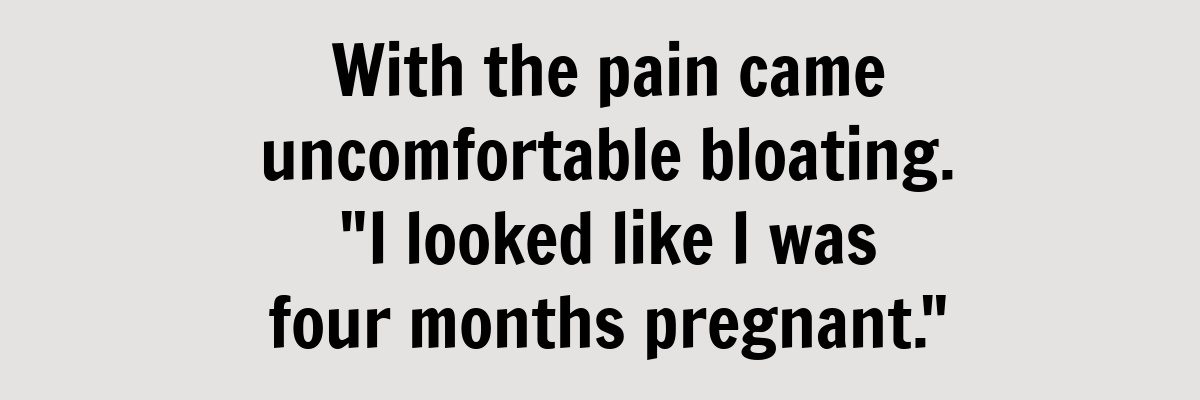
By the spring of 2020, the bloating had stopped dissipating when her period did. Then the pain spread to her back. She also found she could eat only small amounts before she felt full. Her doctor sent her for an ultrasound. “They’re not allowed to tell you anything, but the technician looked scared,” Dyal says. “She left to get her supervisor.”
The ultrasound revealed that Dyal had ascites, a buildup of fluid in the abdomen. She was sent to the ER, where doctors “tapped” her stomach, inserting a long needle and removing a litre of dark brown fluid. “I was lying there watching it happen, and I was so scared,” she says. “It was surreal.” She was told it could be cancer, or maybe an infection in her liver. Given her family history of cancer, she was terrified.
Dyal was discharged but returned the next day for more tests, including another ultrasound and a CT scan. She remained in the hospital for four days, but doctors couldn’t figure out what was wrong. Ascites is most often associated with cirrhosis (scarring) of the liver, heart failure or cancer. Lab tests found only that the fluid was “hemorrhagic,” or bloody. Dyal was referred to a liver oncologist, who ruled out cancer; a rheumatologist, who ruled out Crohn’s; and a gastroenterologist, who used an endoscope to explore her stomach but couldn’t find anything amiss.
By now Dyal, who was unmarried, was worried about her fertility and tried freezing her eggs, but due to all the fluid, doctors were able to retrieve only one. She froze it anyway. In November 2020, she underwent an exploratory surgery, and doctors discovered that once again her abdomen was full of bloody fluid. She also had tea-coloured patches of tissue on her liver, colon and inside the lining of her stomach. The surgical team suspected the test ruling out cancer may have been wrong, or that it was an infection. They biopsied several of the patches and were surprised when the lab results came back positive for endometriosis. Dyal was referred to one of the gynecology teams at Mount Sinai Hospital in Toronto.
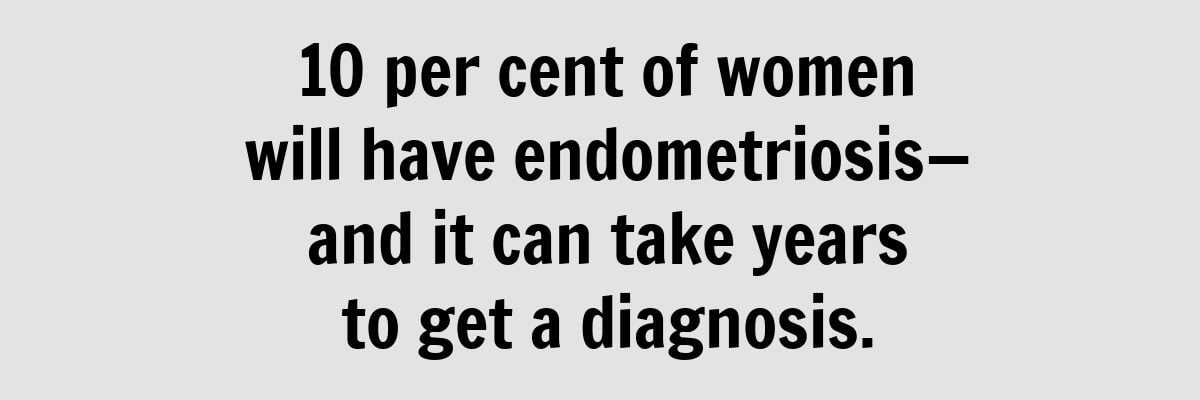
Endometriosis is a condition in which tissue similar to that normally lining the uterus begins growing outside of it. Prevalent in roughly 10 percent of Canadian women, it can typically take around seven years or longer for patients to be diagnosed because it is so often dismissed as “normal” period pain. Pain during the menstrual cycle is the most common symptom; fluid buildup is not. After the surgery, the fluid in Dyal’s abdomen continued to accumulate. “I couldn’t lie down because the pressure made it hard to breathe,” she says. “I had to prop myself up on pillows to sleep.”
Not long after that, Dr. Meghan McGrattan, an advanced gynecologic surgery fellow at Mount Sinai, removed almost three litres of fluid from Dyal’s abdomen. In the dozens of patients she’d tapped over the years, McGrattan had never seen ascites associated with endometriosis. She did some research and discovered that cases like Dyal’s are rare. Only about 127 endometriosis patients worldwide have presented with the same fluid buildup. “Endometriosis is not a well-understood cause of ascites, but we are continuing to learn more about it,” says McGrattan. “If you don’t know to look for it, you won’t find it.” McGrattan hopes the discovery helps ensure women like Dyal won’t have to wait years for a diagnosis.
Doctors are still working toward determining an exact cause of endometriosis and finding a definitive cure, but there are medications that keep the pain at bay. These medications can also increase fertility. “We counsel patients that it’s a chronic disease and that the treatment goal is to help them feel as well as possible,” McGrattan says. When Dyal learned that the lab test confirmed she had endometriosis, not cancer, she felt only relief. “I wish I could go back and tell my younger self that it isn’t normal to be in that much pain,” she says. “I might have pushed harder.”
Next, check out 20 symptoms you should never ignore.
